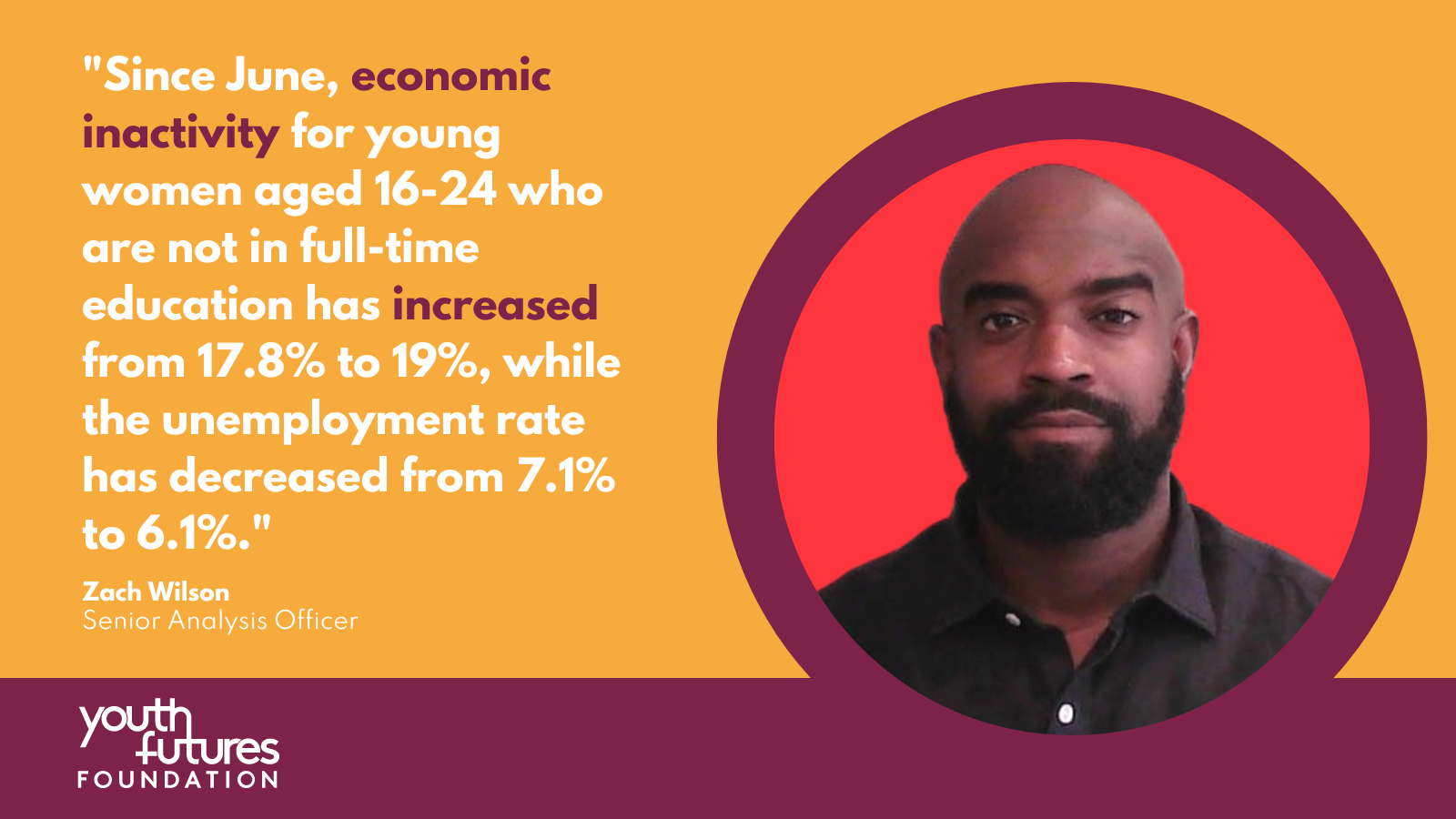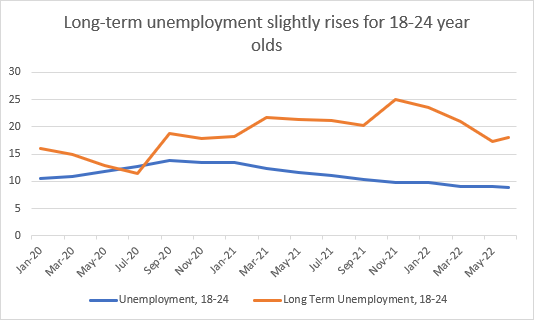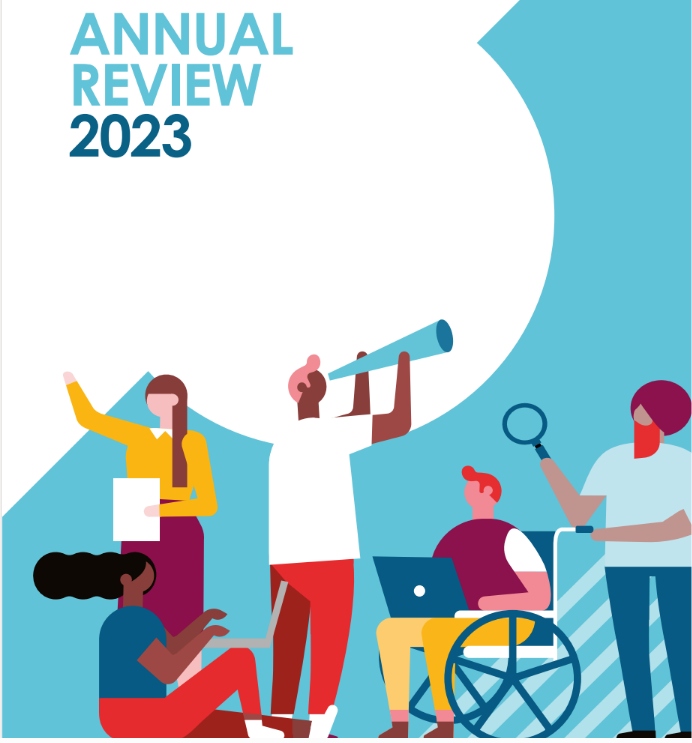Our Senior Analysis Officer, Zach Wilson, responds to this month’s ONS labour market statistics as we see economic inactivity rise for young women.
Amid an increasing cost of living crisis, this month’s job stats continue to show a polarising labour market for young people.
Since June, we have seen economic inactivity rise for young women aged 16-24 who are not in full-time education, from 17.8% to 19%, while the unemployment rate has decreased from 7.1% to 6.1% and employment slightly decreasing from 76.4% to 76.1%. With respect to young men not in full time education, since June, economic inactivity has increased by a much smaller amount than that of young women, with an increase of 0.1% which brought it to 14.9%. The unemployment and employment rates for that of young men not in full time education decreased from 11.3% to 11.2% and remained stagnant at 75.6%, respectively, since June.
This is not the best of cases for young people who are not in full-time education and have the left the labour market, as it shows less are seeking work, especially young women, who see a larger increase in economic inactivity.
Long-term unemployment has slightly risen for 18–24-year-olds, but unemployment remains on the decline.
UK inflation rose to a 40-year high of 9.4% in June and is expected to soar above 13% by October. This gives clear indication that people will continue to struggle with the rising prices, especially those who are young. However, on a positive note, unemployment remains on a near record low, despite the challenging economic circumstances we face. Being paid a good wage as a means of keeping up with the rise in cost of living remains key.



